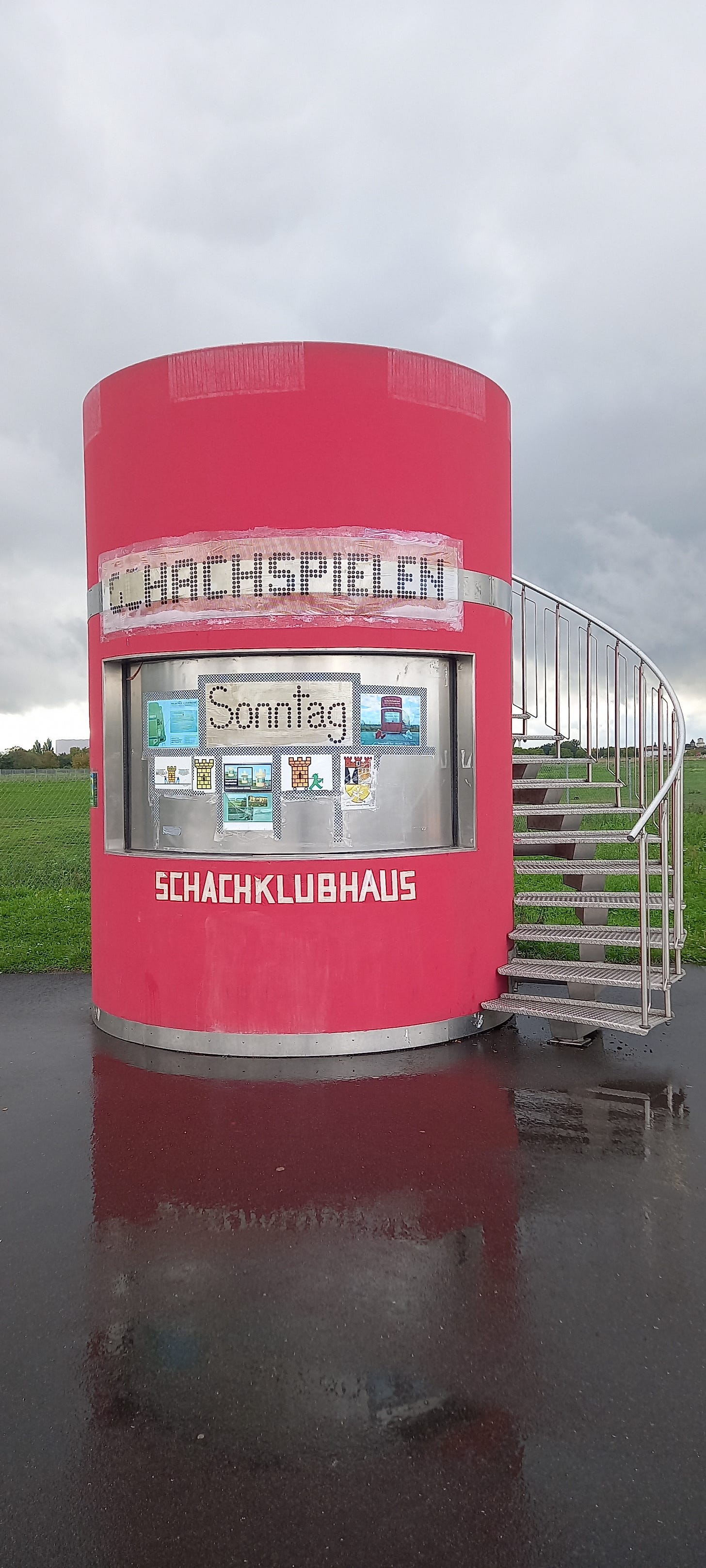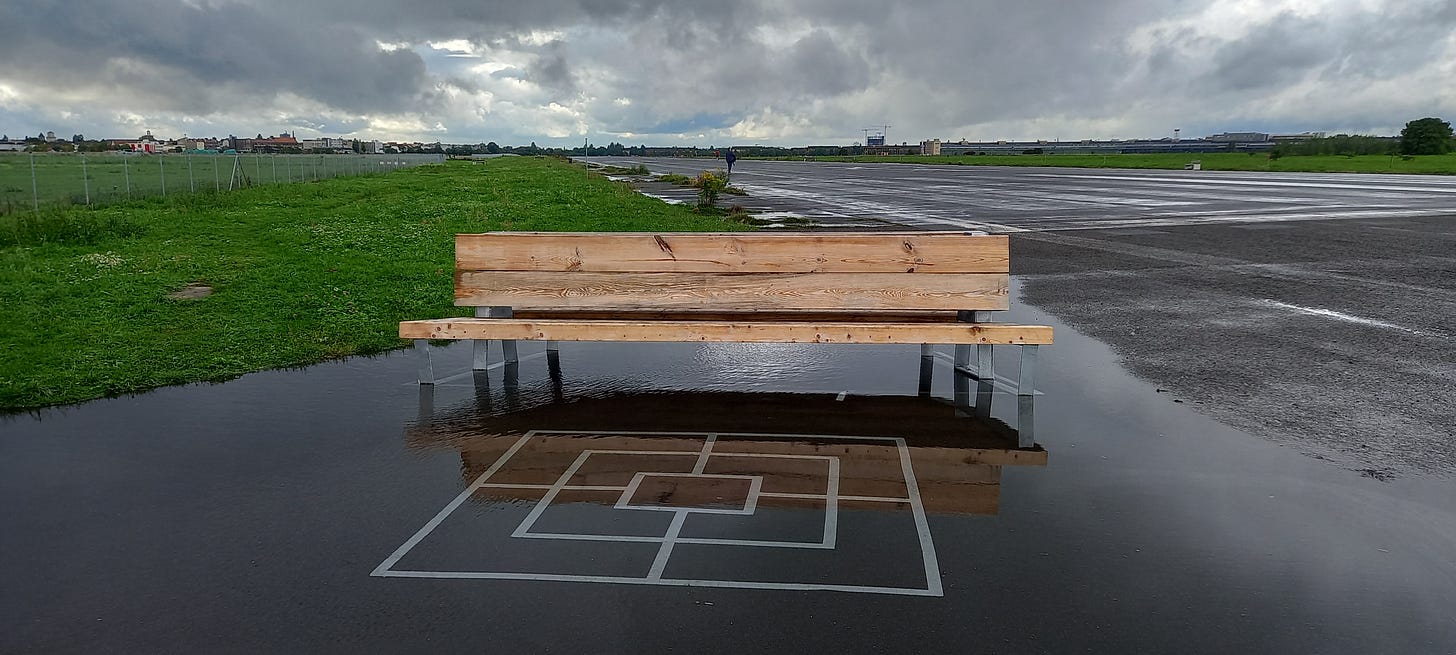Hidden Berlin - In Plane Site
Where I discover an abandoned airfield with a rich, troubled history and explore the joys of repurposed public spaces
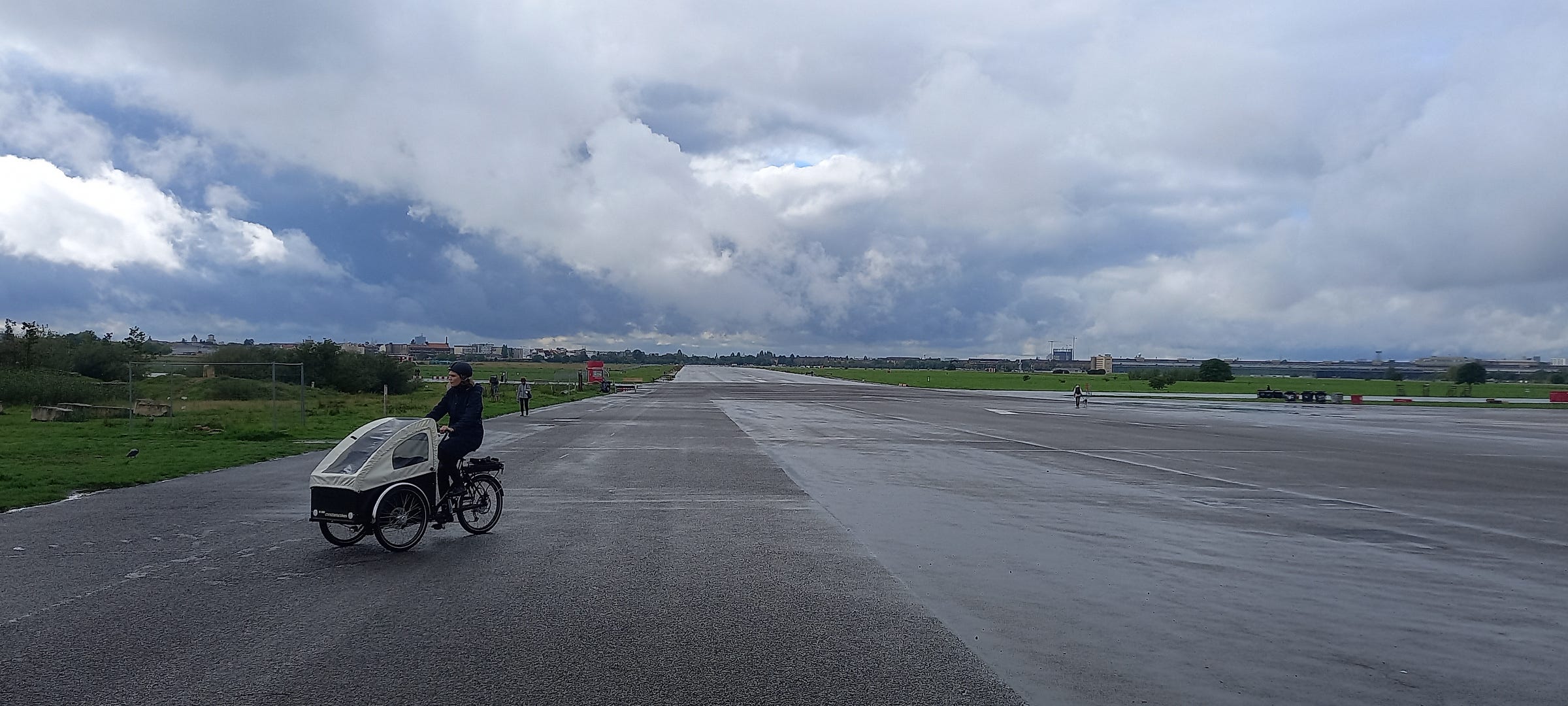
“The Swimmers” landed on Netflix recently – the story of two Syrian sisters making their way to Berlin, hoping to compete at the Rio Olympics. After the girls arrive in Berlin, they are taken to a refugee processing centre and shelter. Watch carefully and you can see a huge, crescent-shaped building surrounded by acres of concrete and grass. That’s Tempelhof airport, now known as Tempelhofer Feld, a huge area in South Berlin. Hitler chose Tempelhof to be the showcase airport for Germania, his utopian reinvention of Berlin as the centre of the “Greater Germanic Reich”. Now Tempelhofer Feld is the largest park in the city - a vast, flat space abutting respectable-looking residential districts.
This area of Berlin was used for military and aviation purposes long before the Nazis and their notions turned up. In the 18th and 19th centuries it served as parade ground for the military. In 1909, Tempelhof airfield was the place where aviator Orville Wright kept a plane aloft for a whole hour, creating a world record.
It was the end of the 1930s when the space became a showcase for glory - architect Ernst Sagebiel was commissioned to design the biggest airport in Europe. At the centre of this project was a semi-circular building in golden stone, its elegant lines over 1.2 kilometres in length, destined to house 9,000 rooms. The roof was designed to accommodate huge crowds for the purpose of watching extravagant air shows - displaying the power and skill behind the Reich’s military forces.
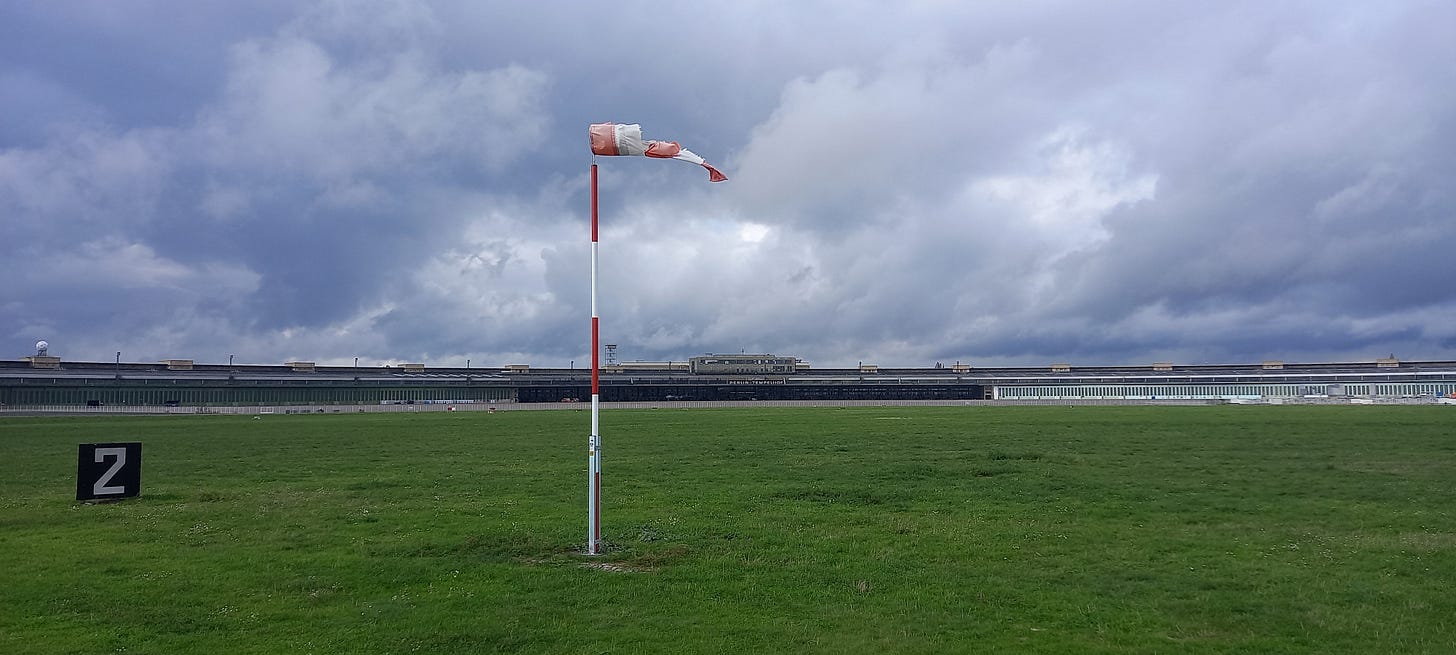
The daunting airport building remains today, evidence of the grandiose vision of an evil man. Informative tours are available for visitors, who can explore this extraordinary structure, learn about the history of its design and the elaborate engineering involved in its construction.
Hitlers overblown airport dream was never realized – after Germany’s defeat in the Second World War, Tempelhof’s location placed it in the American sector of West Berlin. In June 1948, Soviet troops formed a blockade preventing supplies from reaching people that lived in the West. US and UK aircraft flew into or out of the airfield every minute of every day for close to a year, delivering coal, hay and food in “Operation Vittles”, also known as the “Berlin Airlift”.
After serving both as a civilian and military airport, Tempelhof closed in 2008 and became a community recreation park – a resource for schools, families and tourists. Between 2015 and 2017 part of the park served as a huge refugee shelter – as featured in the film. It also did a stint as a vaccination centre during the height of the pandemic crisis – the scale of the place lends it to being useful.
I did some quick research before my visit, reading through tourist leaflets and online resources advertising the space. The repurposed Tempelhofer Feld looked really appealing - billed as a calm, warm pulse of Berlin’s otherwise racing heart.
I found pages of photographs of people relaxing on stretches of grass lit by hazy sun, sprigs of wild meadow flowers in shot. I read about dog walking areas, running tracks, community gardens, skate parks, bbq stations and acres of free space to play, picnic, sunbathe and recharge.
I have visited Berlin at different stages of the year. Weather is not its strength and I say that as a Brit. However much we may like to think of the city as a beacon of “Western Europe " - geographically, it isn’t really. Vicious winds rip through the city from the east. It rains a lot. It is really cold in the winter months. The suspicious number of excellent museums and indoor activities should be a strong clue – it’s not that nice outside.
I went to Tempelhofer Feld early one Monday afternoon in September. I walked there, in the pouring rain, after trying to visit a brewery-turned-art-gallery (very Berlin) which was closed. My poor sense of direction, plus rain, plus erratic google maps, took me a strange route, through a large park, overlooked by housing. I spotted a series of increasingly short concrete posts, each one supporting a flared concrete box and followed them.
I arrived at a tall fence, enclosing acres of concrete, glistening under a coating of rainwater. The sky was crowded with charcoal clouds; broad flat runways reflected dim light. A woman on a bicycle with a small, covered trailer in front, cycled diagonally across the tracks. As she passed, laughter escaped from under the canopy of the trailer and I could see two young children inside.
Signs at the entrances revealed pride for the space – posters for salsa groups, litter picking, tai chi, yoga, guided walks and bicycle rides welcoming everyone to use the area as it was never originally intended, for joy and fun. The bleak appearance and scale of the place was exciting and slightly overwhelming.
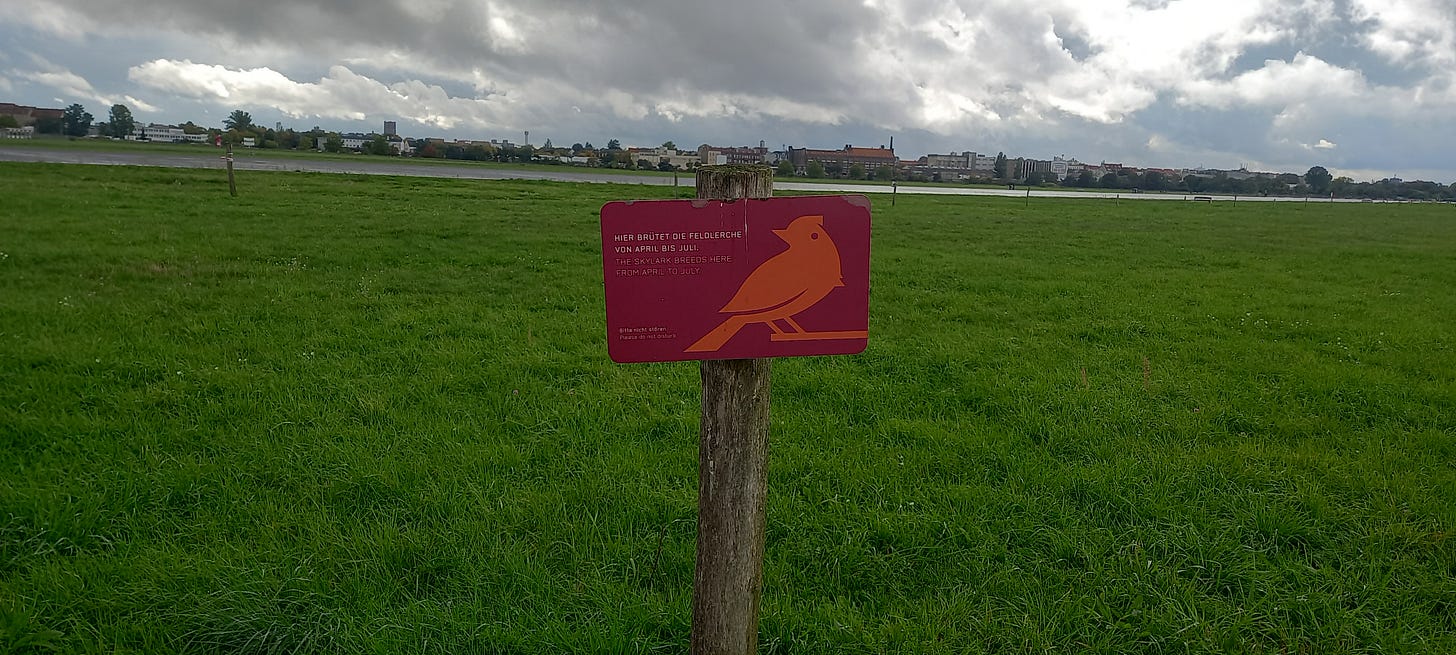
A detailed map showed areas turned over to rewilding projects and introduced the new inhabitants of the airfield: ground nesting birds near the airport buildings and a flock of rare sheep, quietly grazing, in a field near the perimeter fence.
I ask myself some honest questions - What is it about abandoned places that attracts me so strongly? Is there something of the grubby voyeur about me, that takes satisfaction in exploring areas that have given up on their original purpose? Or am I finding refuge in a positive metaphor for aging, seeing how “going to seed” can be something beautiful? Maybe I am clutching at a spiritual meaning, trying to find the uplifting in the mundane - is that lapsed Catholicism back again, prodding me to see beyond my own petty existence ? I think it is probably a mixture of all of these things.
Truly derelict places, bereft of care, the rotting window frames and bare foundations of a deserted family house – those places provoke an extreme reaction in me. Watching nature seize a building, or a space that used to serve man sates some fatalistic hunger - producing a smug, ghoulish sense of the inevitable and the terrible. Like a horrible object lesson in how tenuous a hold we have in this life, even on material things. A lesson in how small and insignificant we are and how rotten beneath the surface.
There is something unsettling about a house now inhabited only by vermin and weeds. I think it is the fact that something very personal has become public, like possessions after a death, or a body lying in the street being gawped at by strangers, It’s fascinating, but sordid. I do like an abandoned house, but it leaves me a little raw.
I prefer the derelict insdustrial space that has been repurposed. I’m particularly fond of a “rewilding” project (which is really just code for letting nature in a bit, but keeping her from getting too messy - rather like serving the perfect amount of alcohol at a party). In the context of the abandoned space, do I want to have to scythe my way through brambles and take my chances with dangerous wildlife or aggressive security measures? Or would I prefer to wander along a pleasantly gravelled path, admiring weeds and newts, with slopes and rails and lifts that ensure more visitors have access to the area?
The repurposing of abandoned places creates a balance that feels both safe and edgy. I am middle-aged - this is the appropriate level of excitment for someone at my stage of life. It allows me to imagine I am an urban explorer, without having to deal with searchlights, rat bites and guard dogs. And at Tempelhofer Feld, there is an excellent, hipster coffee/craft beer shack. Try finding one of those in a properly derelict chemical factory or underground train tunnel….
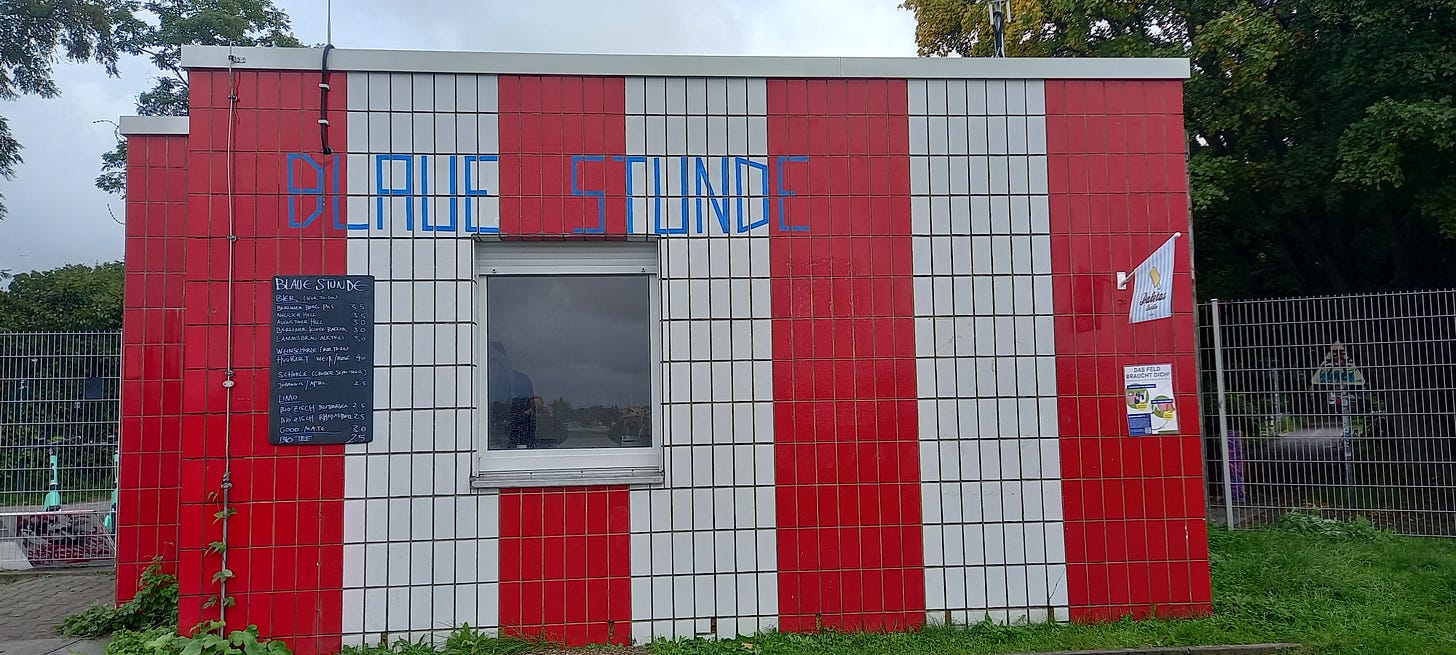
Tempelhofer Feld is open all year round, from dawn until dusk. For details on how to get there - click here


